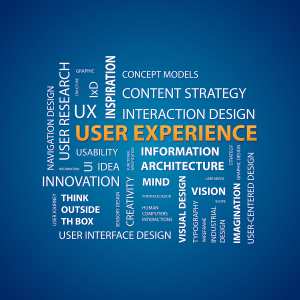 We got a kick out of a recent Harvard Business Review blog post written by Robert Fabricant. His post entitled The Rise of UX Leadership begins by characterizing UX as “the new black” in business, borrowing from a fashion phrase to demonstrate the prevalence of UX in product strategy and development.
We got a kick out of a recent Harvard Business Review blog post written by Robert Fabricant. His post entitled The Rise of UX Leadership begins by characterizing UX as “the new black” in business, borrowing from a fashion phrase to demonstrate the prevalence of UX in product strategy and development.
This characterization certainly rings true for the companies to which we offer user experience services. In every engagement, the focus is on developing better products, applications and experiences that are easier for intended customers, audiences, end-users and others.
UX in the Lead
The HBR post on UX leadership inspired us to consider what it looks like when UX takes the lead in product development.
Specifically, what pieces are in place when there is a focus on developing a product, application or service that is relevant or meaningful to an end-user?
Noted here are five observations on the product development effort when UX is in the lead:
- There is a shared understanding of the business value a focus on a good UX provides. From the executive team to the product manager, when UX takes the lead, every team member is a champion of user-centered design. This perspective cuts across the entire company – from the executive sponsor to developers. Easy, efficient, and delightful user experiences results when product teams gather, analyze, and apply user feedback as an integral part of the design and development process.
- UX project goals are clearly articulated. When UX is in the lead, the team takes the time to define quantifiable metrics that create a baseline of the current design and measure “post-launch” performance for improvements. For example, this might include measuring conversions, downloads or click-through to establish strategies for improvement during website usability testing.
- An emphasis on UX begins early in the process. Instead of bringing in user research when product development is well underway (or worse yet, after the application launch), when UX is in the lead, user research begins in the very early days of product development. By incorporating customer insights into the application development cycle early on, there is a better chance of developing satisfying or amazing customer experiences. As we noted in an earlier blog post about customer-focused design, this is “thinking from the outside-in.”
- The process is based on sound user research best practices. UX leadership entails a multidisciplinary approach and expertise in a range of methodologies. For example, the team takes the time to examine which usability and testing techniques are best suited to the specific development efforts.
- The process is flexible. In the product development cycle, the scope and scale for user research often needs adjusting as deadlines, project scope, budgets and other constraints change. For instance, user insights might compel a change in direction with the information architecture of an application, and modifications will be made. When there is a UX-led effort, the team responds and adjusts the methods, tools and techniques to fit the constraints of the project.
What else does it take to develop a product, application or service that is meaningful to your customer? Feel free to include your insights in the comments section.
TecEd shares your goal of satisfying your customers with easy-to-use products.
To learn how TecEd can help you put UX in the lead, and design products that are easier to use, please contact inquiries@teced.com.

